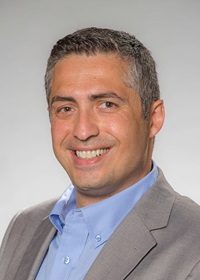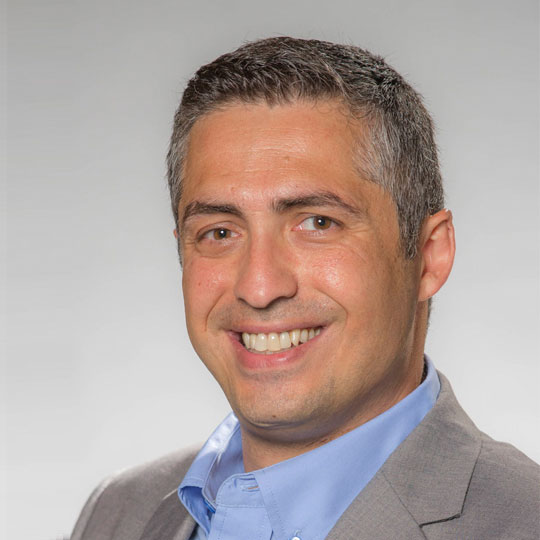Dr. Pate’s Prescription for Change
Transforming health care through data and analytics


We are incredibly fortunate to have recruited Onur Torusoglu to St. Luke’s to be our first-ever chief digital and analytics officer. Leaders with expertise in these areas are in short supply, and our beautiful state and St. Luke’s vision for the future attracted Onur to join us and to move to Idaho from Louisiana with his family. Onur also brings to St. Luke’s deep experience in the pharmaceutical and provider industries. Here, he writes about how data and analytics promise to accelerate our transformation, improve outcomes and enhance the patient experience.
- David C. Pate, M.D., J.D.

Health care continues to transform and innovate, to deliver higher-value care, reduce costs and engage patients amidst a changing regulatory landscape and shifting ecosystem.
At St. Luke’s, improving outcomes, lowering costs and improving the patient experience are our focus, even as we shift our business model to achieve these aims.
Data analytics is a perfect partner, for us and for others in health care, in that it promises to offer insights that we’ve never had access to before.
Breaking it down
The health-care environment is teeming with information from a host of sources, including:
- Population and health statistics
- Electronic health records
- Insurance claims
- Patient trends
- Pharmaceutical data
The ability to sort through and analyze such information to act on will be the key to improving the quality, delivery and efficiency of health-care services for all involved.
- For providers, it could mean identifying individuals at risk for particular illnesses, reduced re-admissions and more accurate diagnoses.
- For patients, it could mean enhanced care, targeted treatment and reduced costs.
A report published last year by the research firm Frost & Sullivan concluded that more than 300 exabytes of health data were generated globally in 2015, with that number expected to exceed 2,300 exabytes by 2020. This is staggering when you consider that a single exabyte is equivalent to 250 million DVDs worth of information. This data is generated by electronic medical records, medical devices, sensors, wearables, mobile apps, genomic research and even non-health-related sources.
Using data to drive change
Perhaps the greatest opportunity for data analytics in health care exists in helping providers shift from reactive to proactive care through predictive analytics.
Let’s examine the potential impacts that analytics might have for two of our key areas of focus: acute care and aging.
Acute Care:
- Mining Data: New ways to mine data and analyze it will enable new avenues of research, identifying new patients prior to acute episodes and improving efficiency.
- Artificial Intelligence: The advent of machine learning and artificial intelligence is prompting the development of more detailed risk profiles, easier detection of emerging health concerns and more personalized treatments for acute conditions.
- Impact Areas: Top areas for use of analytics in acute care are likely to include triage and predicting disease events, as well as acute disease incidence in population health.
- Root Causes: By studying and analyzing trends and patterns in aging populations, care providers can pinpoint the real problems and develop solutions to address them before they spiral into crises.
- Aging in Place: Networks that make it possible for older people to stay in their homes have been implemented in some places to better provide coordinated and cost-effective health services possible outside of hospital or assisted living facilities. This approach reduces institutional care while supporting home- or community-based care and other services.
Aging:
Data analytics in health care can only get bigger, and will play a significant role in how we can further improve patient care, minimize losses and reduce costs. Research conducted by McKinsey & Co. last year estimates that value pathways developed using health-care data could deliver annual savings worth $300 billion to $450 billion in the United States alone.
The journey from data to actionable insights to action will be a long-term effort. Investing in human talent, ensuring we have the right technology and leveraging the data that we glean will help us achieve the patient-centric care that is basic to a value-based care environment. In short, it can help us fulfill our mission to lower health care costs while delivering superior patient experiences, treatments and outcomes.
About The Author

Onur Torusoglu is the chief digital and analytics officer of St. Luke's Health System, based in Boise, Idaho.

